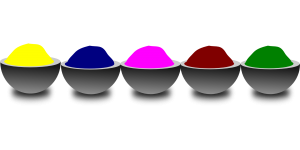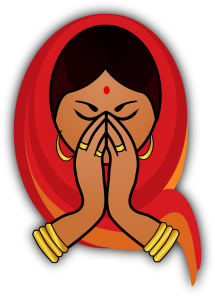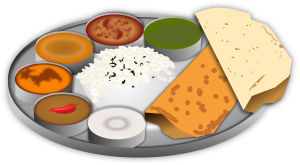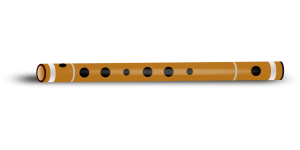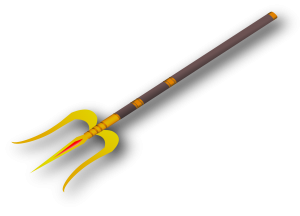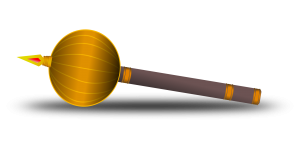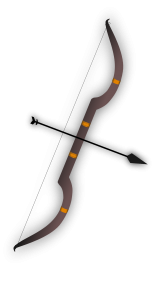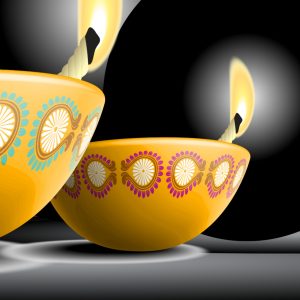The following is an excerpt from The Art of Sādhana Chapter IX by Śrīla Bhakti Pramoda Purī Mahārāja
On Sunday, the third of December, 1967, an intriguing news item appeared in the Ananda Bazar Patrika, an important Calcutta newspaper. The headline read, “Miracles Still Happening Today.” The story had been sent in on the previous day by a staff reporter from Alipore Dwar, who wrote:
“The youngest son of Kulup Chandra Das of the Chekmari area of Madari Hat was bitten by a snake. Many 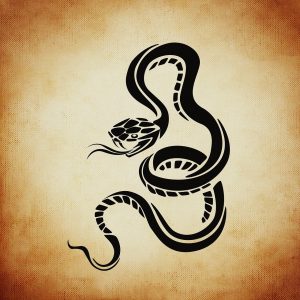 ayurvedic doctors and exorcists were called in to no avail. Finally an allopathic doctor came and declared the poisoned child to be dead. Even so, his parents wanted to see if there was some last chance at saving their son. They had heard of a small community of exorcists, or ojhās, who lived near the village of Bogribari Hat, located between Phalakata and Jateshwar, and who apparently knew how to cure snakebites.
ayurvedic doctors and exorcists were called in to no avail. Finally an allopathic doctor came and declared the poisoned child to be dead. Even so, his parents wanted to see if there was some last chance at saving their son. They had heard of a small community of exorcists, or ojhās, who lived near the village of Bogribari Hat, located between Phalakata and Jateshwar, and who apparently knew how to cure snakebites.
“One of these ojhās came to Chekmari and, after chanting a spell over three small shells, sent them off to find the snake that had bitten the child. Under the effects of the spell, the snake came out of its hiding place and slithered into Kulup Das’ home. The three shells over which the ojhā had recited his incantation over were stuck to the snake’s head, back and tail.
“For an entire day and night, the snake sucked the poison out of the body of Kulup Das’s son from the same spot where it had bitten him. Then suddenly, the child’s body rose from the dead. Thousands of people witnessed this event.”
The reporter did not mention when all this took place, but this is not the only incident of its kind. The amazing power of such mantras or spells can still be seen today working in various different areas of life. In my home village of Ganganandapur in Jessore district, there was a leather worker named Haripada Muchi who was a very good ojhā who also knew how to cure snakebites by incantations of this sort. He once told me, “Unless one has complete faith in the guru and the mantra he has given, he will never directly experience its potency.”
There are numerous spells that work against ghostly possession or snakebite. Even though these spells may be in a vulgar dialect and call on the power of some lower god, they are still seen to be remarkably effective. If such mantras are seen to produce results, then we should inquire into the reason why the powerful mantras of six, eight, 10, 12, 18, or 32 syllables, sanctified by the presence of the seed syllable and the words of surrender (svāhā or namaḥ) do not reveal their innate potencies, even when they have come down in a pure disciplic succession. Perhaps we should consider the leather worker from Ganganandapur’s insight, for he has clearly divined the reason for our failure.
The following is an excerpt from an article by Śrīla Bhakti Vijñāna Bhāratī Mahārāja, located at https://www.visuddhacaitanyavani.com/single-post/2017/12/14/Srila-Bhakti-Bhudeva-Srauti-Gosvami-Maharaja, on The Glories of Śrīla Bhakti Bhūdeva Śrautī Mahārāja
Śrīla Śrautī Gosvāmī Mahārāja is one of the eighteen sannyāsa disciples of Śrīla Prabhupāda. He possessed a special siddhī (mystic perfection) which helped remove poison from a dog bite by chanting some mantras. Twice,  during Vraja Maṇḍala Parikramā, my godbrother Śrīpāda Bhakti Prasāda Purī Mahārāja was bitten by a dog. The first time he had to go to Delhi and get an injection, and on the other occasion, Śrīla Śrautī Gosvāmī Mahārāja, who was with us in the parikramā party, exclaimed, “No issues! I will do the needful.” He made Purī Mahārāja stand on a plate made out of wet clay and began reciting some mantras, which made the plate rotate while Purī Mahārāja still stood on it. Eventually the plate stopped rotating. Then he affirmed, “Nothing further needs to be done. The poison has been removed.” Basically the plate continued to rotate as long as the poison was not completely removed. He would not normally exercise this siddhi; it was only incidental to a maṭha-vāsī being bitten by a dog. I have personally witnessed this incident, hence I remember it.
during Vraja Maṇḍala Parikramā, my godbrother Śrīpāda Bhakti Prasāda Purī Mahārāja was bitten by a dog. The first time he had to go to Delhi and get an injection, and on the other occasion, Śrīla Śrautī Gosvāmī Mahārāja, who was with us in the parikramā party, exclaimed, “No issues! I will do the needful.” He made Purī Mahārāja stand on a plate made out of wet clay and began reciting some mantras, which made the plate rotate while Purī Mahārāja still stood on it. Eventually the plate stopped rotating. Then he affirmed, “Nothing further needs to be done. The poison has been removed.” Basically the plate continued to rotate as long as the poison was not completely removed. He would not normally exercise this siddhi; it was only incidental to a maṭha-vāsī being bitten by a dog. I have personally witnessed this incident, hence I remember it.
The following is an excerpt from Divine Aspiration, The Worship of the Pure Heart by Śrīla Bhakti Rakṣaka Śrīdhara Mahārāja
Devotee: I would like to ask another question if I may. In my country I have contact with a very influential man. He is the President of a Karate Association and a very expert martial artist. He likes Kṛṣṇa Consciousness and wants to be a devotee, but he is not so much a brahminical type; he likes the kṣatriya-dharma. Also, he is attracted to mystic powers, and apparently, he has them. What is your Divine Grace’s view on these things? What instruction would you give to your Mission about dealing with, or accommodating them? Perhaps you could give some advice as to how I should introduce Kṛṣṇa Consciousness to this person. What would be your Divine 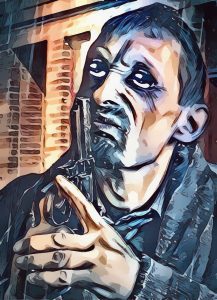 Grace’s guidance in this case, to help a person of such a nature?
Grace’s guidance in this case, to help a person of such a nature?
Śrīla Bhakti Rakṣaka Śrīdhara Mahārāja: Just as you have already asked, regarding the learning of jyotiṣa, astrology, so it may be in this case. It is of a very lower order to utilize physical strength to fulfil our purpose. Mahāprabhu did not accept that. When Śrīla Svāmī Mahārāja’s Maṭha in Māyāpura, Śrī Chandrodaya Mandir, was attacked by a party of guṇḍās, gangsters, he did not oppose them with physical force. He was inside the building at the time, and he sent a kīrtana party out, “Go and offer yourself as the prey of those guṇḍās.” Those ruffians had come, entered the compound, and created some disturbance; Svāmī Mahārāja asked his devotees, “Go out and challenge them, with kīrtana. Without any weapons, go with the kīrtana party, and offer yourself as the prey of the guṇḍās.” By that, the danger subsided. So Mahāprabhu’s weapon is passive resistance. Not physical attack, offensive for offensive, but to show a passive attitude in order to conquer the offensive thing—that will be better. That is the policy of Mahāprabhu.
But when that is not possible, one in a lower stage of realization can take physical help for self-protection. And sometimes, if we see that the Deity or the Vaiṣṇava is going to be prey to the rowdies, if They are being attacked or are going to be demolished, then we are justified in using any measure to protect them: the stick, or even the gun, or any other weapon available to us. At that time, we can assert whatever force possible. But generally, such measures we may not use for ourselves; for our own protection, we depend fully on Kṛṣṇa, rakṣiṣyatīti-viśvāso: “He will protect me.” But in the case of Vaiṣṇava, Guru, or Deity, we can assert ourselves as far as possible and with all our resources; we will be ready to give our own lives. If sincerity of purpose is there, then in extreme cases such use of physical force may be accepted. But it is a question of realization; according to one’s own realization, the proper adjustment in understanding and applying these principles will come.
The following is an excerpt from My Beloved Masters by Śrīla Bhakti Vijñāna Bhāratī Mahārāja on The Glories of Śrīla Bhakti Śrīrūpa Siddhāntī Mahārāja
One day, during the time I was dealing with a lawsuit to remove the tenants illegally occupying the appearance  place of Śrīla Prabhupāda in Purī, Śrīla Siddhāntī Gosvāmī Mahārāja approached me with concern for my wellbeing. With the affection of a guardian, he said, “I will have a nṛsiṁha-kavaca made for your protection. You must wear it at all times. You have no idea what harm these people might do to you.” Sure enough, some days later he brought me a nṛsiṁha-kavaca prepared by his godbrother, Śrīpāda Kṛṣṇa-keśava Brahmacārī. When he gave it to me, he showed me his arm, which bore a nṛsiṁha-kavaca, and said, “Look, I too wear one.”
place of Śrīla Prabhupāda in Purī, Śrīla Siddhāntī Gosvāmī Mahārāja approached me with concern for my wellbeing. With the affection of a guardian, he said, “I will have a nṛsiṁha-kavaca made for your protection. You must wear it at all times. You have no idea what harm these people might do to you.” Sure enough, some days later he brought me a nṛsiṁha-kavaca prepared by his godbrother, Śrīpāda Kṛṣṇa-keśava Brahmacārī. When he gave it to me, he showed me his arm, which bore a nṛsiṁha-kavaca, and said, “Look, I too wear one.”
Although I accepted the nṛsiṁha-kavaca he gave me, I faced an internal dilemma about whether I should wear it. I thought it over and concluded that if I were truly surrendered and if all my efforts were intended purely for the service of Bhagavān, then indeed, no one would be able to cause me the least bit of harm or even so much as bruise me as long as He wishes to accept my service. Furthermore, since Bhagavān is the one accepting my service, the responsibility of my protection lies with Him alone. Why should I independently endeavour to protect myself? For these reasons, I was unenthusiastic about wearing the nṛsiṁha-kavaca. However, since it was affectionately given to me by Śrīla Siddhāntī Gosvāmī Mahārāja, I always kept it with me. To this day, it is stored safely in my closet.
When we eventually won the lawsuit, Śrīla Siddhāntī Gosvāmī Mahārāja told me, “You have snatched this meal right out of the tiger’s mouth.”
“Mahārāja,” I replied, “what capacity do I possess to snatch a meal from the jaws of a tiger? It is by the power of Śrīla Prabhupāda’s disciples such as yourself – by your good wishes and mercy – that we have become instruments in fulfilling our gurupāda-padma’s desire.”
Śrīla Mahārāja then said, “Maintaining this kind of submissiveness is the key to gain rightful and eternal entry into vaiṣṇava-dharma.”
The following is an excerpt from My Beloved Masters by Śrīla Bhakti Vijñāna Bhāratī Mahārāja on The Glories of Śrīla Bhakti Gaurava Vaikhānasa Mahārāja
Śrī Śrīmad Bhakti Gaurava Vaikhānasa Gosvāmī Mahārāja appeared in this world in Baḍagaḍa-grāma, a village in the Gañjām district of Orissa, on the day of Kṛṣṇa Pratipadā during the month of Kārtika. He was born in an elite brāhmaṇa family, and his parents gave him the name Śrī Ujjvaleśvara Ratha. For generations, his forefathers had reverently carried out the momentous role of serving as royal priests for the king of Baḍagaḍa.
Śrī Ujjvaleśvara Ratha, the rāja-guru of Baḍagaḍa, and Śrī Liṅgarāja Miśrā, the rāja-guru of Dharākoṭa, together started practicing the arts of tantra. As a part of that practice, they once went to a cremation ground on a dark 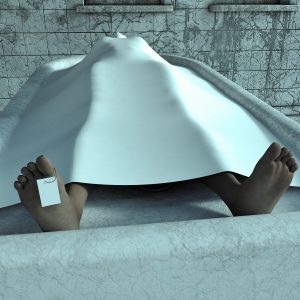 moon night. There, they practiced their mantras while sitting on the chest of a corpse. When, by the power of the mantras, the corpse raised its hand, Śrī Liṅgarāja Miśra got up and ran away out of fear. Śrī Ujjvaleśvara, on the other hand, started shouting at the corpse, “Mṛṣā, mṛṣā—Whatever you are doing will go in vain,” and continued reciting his mantras.
moon night. There, they practiced their mantras while sitting on the chest of a corpse. When, by the power of the mantras, the corpse raised its hand, Śrī Liṅgarāja Miśra got up and ran away out of fear. Śrī Ujjvaleśvara, on the other hand, started shouting at the corpse, “Mṛṣā, mṛṣā—Whatever you are doing will go in vain,” and continued reciting his mantras.
He repeatedly pushed the corpse’s hand back down until the corpse, exasperated, finally asked him, “Why are you doing this?”
“To gain knowledge,” Śrī Ujjvaleśvara Ratha replied.
“Then go,” said the corpse, “and you will attain the topmost knowledge. You need not worry at all.” And so it came to pass that Śrī Ujjvaleśvara Ratha became a distinguished scholar.
While Śrī Ujjvaleśvara Ratha was once staying the night in a village with a large group of people, a Tantric priest began distributing sweets to everyone. Because Śrī Ujjvaleśvara Ratha had practiced tantra-yoga, he could tell that the sweets were actually animal excrement. He told everyone this, but one or two people doubted him. He then collected a particular type of grass and touched it to the sweets, where upon they transformed, revealing that they were indeed stool.
One day during Śrī Navadvīpa-dhāma parikramā, Śrī Ujjvaleśvara Ratha was crossing the Sarasvatī River by boat to go to Śrī Godrumadvīpa. Śrīla Prabhupāda was also in the boat, along with several sannyāsīs and brahmacārīs. Śrī Ujjvaleśvara Ratha had a habit of chewing pān, and so, due to the force of habit, he spat into the Sarasvatī. Śrīla Prabhupāda saw this and immediately said, “We regard Sarasvatī to be identical to Gaṅgā.”
Śrīla Prabhupāda’s statement was so powerful that Śrī Ujjvaleśvara Ratha began to reproach himself. He thought, “People go through so much trouble and spend so much money just to catch a glimpse of the Gaṅgā and bathe in her sacred waters. She is venerated by demigods, sages, seers and great personalities. Because of my bad habit, I have made the offense of spitting into her waters. Moreover, I have made a sādhu unhappy by doing this.” As he thought this, he removed his box of pān from his pocket and threw it into the Sarasvatī. He vowed, “From this day forth, I shall never again take pān as long as I live.”
This anecdote teaches us the real way to listen to and sincerely follow the words of sādhus.
The following is an excerpt from the Sixty-sixth Chapter of Kṛṣṇa, “The Deliverance of Pauṇḍraka and the King of Kāśī.” by Śrīla Bhaktivedānta Svāmī Prabhupāda
The King of Kāśī had a son whose name was Sudakṣiṇa. After observing the ritualistic funeral ceremonies, he took a vow that since Kṛṣṇa was the enemy of his father, he would kill Kṛṣṇa and in this way liquidate his debt to his father. Therefore, accompanied by a learned priest qualified to help him, he began to worship Mahādeva, Lord Śiva. The lord of the kingdom of Kāśī is Viśvanātha (Lord Śiva). The temple of Lord Viśvanātha is still existing in Vārāṇasī, and many thousands of pilgrims still gather daily in that temple. By the worship of Sudakṣiṇa, Lord Śiva was very much pleased, and he wanted to give a benediction to his devotee. Sudakṣiṇa’s purpose was to kill Kṛṣṇa, and therefore he prayed for a specific power by which to kill Him. Lord Śiva advised that Sudakṣiṇa, assisted by the brāhmaṇas, execute the ritualistic ceremony for killing one’s enemy. This ceremony is also mentioned in some of the tantras. Lord Śiva informed Sudakṣiṇa that if such a black ritualistic ceremony were performed properly, then the evil spirit named Dakṣiṇāgni would appear to carry out any order given to him. He would have to be employed, however, to kill someone other than a qualified brāhmaṇa. In such a case he would be accompanied by Lord Śiva’s ghostly companions, and the desire of Sudakṣiṇa to kill his enemy would be fulfilled.
When Sudakṣiṇa was encouraged by Lord Śiva in that way, he was sure that he would be able to kill Kṛṣṇa. With 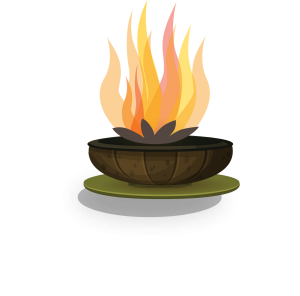 a determined vow of austerity, he began to execute the black art of chanting mantras, assisted by the priests. After this, out of the fire came a great demoniac form, whose hair, beard and moustache were exactly the colour of hot copper. This form was very big and fierce. As the demon arose from the fire, cinders of fire emanated from the sockets of his eyes. The giant fiery demon appeared still more fierce due to the movements of his eyebrows. He exhibited long, sharp teeth and, sticking out his long tongue, licked his upper and lower lips. He was naked, and he carried a big trident, blazing like fire. After appearing from the fire of sacrifice, he stood wielding the trident in his hand. Instigated by Sudakṣiṇa, the demon proceeded toward the capital city, Dvārakā, with many hundreds of ghostly companions, and it appeared that he was going to burn all outer space to ashes.
a determined vow of austerity, he began to execute the black art of chanting mantras, assisted by the priests. After this, out of the fire came a great demoniac form, whose hair, beard and moustache were exactly the colour of hot copper. This form was very big and fierce. As the demon arose from the fire, cinders of fire emanated from the sockets of his eyes. The giant fiery demon appeared still more fierce due to the movements of his eyebrows. He exhibited long, sharp teeth and, sticking out his long tongue, licked his upper and lower lips. He was naked, and he carried a big trident, blazing like fire. After appearing from the fire of sacrifice, he stood wielding the trident in his hand. Instigated by Sudakṣiṇa, the demon proceeded toward the capital city, Dvārakā, with many hundreds of ghostly companions, and it appeared that he was going to burn all outer space to ashes.
The Supreme Personality of Godhead, Kṛṣṇa, is all-pervading. He is within everyone’s heart, and He is also without, in the form of the cosmic manifestation. He could understand that the fiery demon was a creation of Lord Śiva, and in order to vanquish him He took His Sudarśana cakra and ordered him to take the necessary steps. The Sudarśana cakra appeared with the effulgence of millions of suns, his heat being as powerful as the fire created at the end of the cosmic manifestation. By his effulgence the Sudarśana cakra illuminated the entire universe, on the surface of the earth as well as in outer space. Then the Sudarśana cakra began to freeze the fiery demon created by Lord Śiva. In this way, the fiery demon was checked by the Sudarśana cakra of Lord Kṛṣṇa, and, being defeated in his attempt to devastate the city of Dvārakā, he turned back.
Having failed to set fire to Dvārakā, the fiery demon went back to Vārāṇasī, the kingdom of Kāśīrāja. As a result of his return, all the priests who had helped instruct the black art of mantras, along with their employer, Sudakṣiṇa, were burned to ashes by the glaring effulgence of the fiery demon. According to the methods of black art mantras instructed in the tantras, if the mantra fails to kill the enemy, then, because it must kill someone, it kills the original creator. Sudakṣiṇa was the originator, and the priests assisted him; therefore all of them were burned to ashes. This is the way of the demons: the demons create something to kill God, but by the same weapon the demons themselves are killed.
The following is an excerpt from a lecture on Śrīmad-Bhāgavatam Canto 9.9.8 by Śrīla Gaura Govinda Svāmī Mahārāja
There is a story of Sudakṣiṇa who asked Lord Śiva for the benediction to kill Kṛṣṇa. Pauṇḍraka had attached two artificial arms on his body and declared, “I am that Vāsudeva.” Pauṇḍraka Vāsudeva was a friend of Kāśīrāja. When Pauṇḍraka was fighting Kṛṣṇa, his friend Kāśīrāja joined him. Kṛṣṇa killed both Pauṇḍraka and Kāśīrāja. Kṛṣṇa cut off the head of Kāśīrāja.
The son of Kāśīrāja, named Sudakṣiṇa, wanted to avenge the death of his father and with the assistance of his family priest he performed worship to Lord Śiva. Lord Śiva became pleased with his worship and asked him what benediction he wanted. He said he desired to kill Kṛṣṇa. Lord Śiva instructed Sudakṣiṇa to perform the ṛtvik ṛtaḥ Dakṣiṇāgni yajña. Lord Śiva warned him, “A fiery entity will appear from the fire of sacrifice. By utilizing this  fiery entity everything will be burned to ashes. But do not utilise this fiery entity to kill the devotees. You may utilise it to kill the nondevotees. If you utilise this fiery entity to kill the devotees, then you will get the opposite result.”
fiery entity everything will be burned to ashes. But do not utilise this fiery entity to kill the devotees. You may utilise it to kill the nondevotees. If you utilise this fiery entity to kill the devotees, then you will get the opposite result.”
So that fiery entity appeared and was instructed to burn everything. Kṛṣṇa ordered his Sudarśana cakra to protect the devotees and that fiery entity returned and burned all of the inhabitants of Kāśīpura. Sudakṣiṇa and his family members and priest were all killed. Sudakṣiṇa received a boon because he was Lord Śiva’s devotee but because he had an evil intention to kill the devotees of Kṛṣṇa he got an opposite result and was thereby cheated.
Śrīman Mahāprabhu’s intimate associate Śrīla Jagadānanda Paṇḍita has written:
ĵadi kôribe kṛṣṇa-nāma sādhu-saṅga kara
bhukti-mukti-siddhi-vāñchā dūre parihara
Prema-vivarta (7.3)
If you desire to chant kṛṣṇa-nāma, remain in association of pure devotees and reject all desires for senses enjoyment, liberation and mystic perfections.
Image/Art made possible by Pixabay.com & Krishnapath.org

